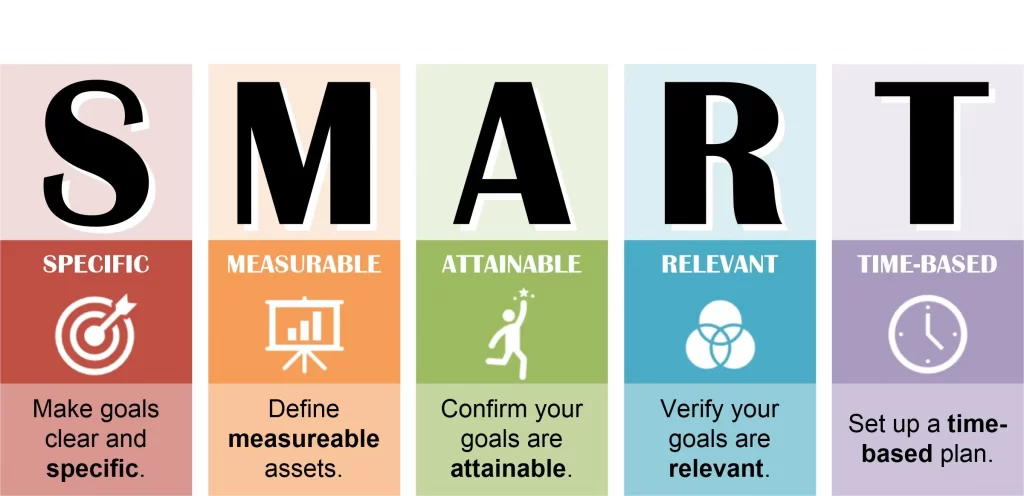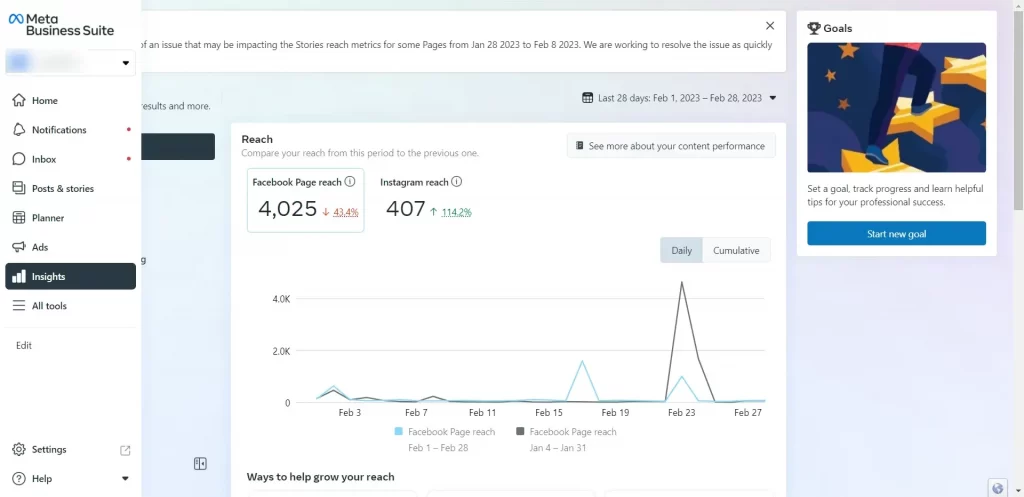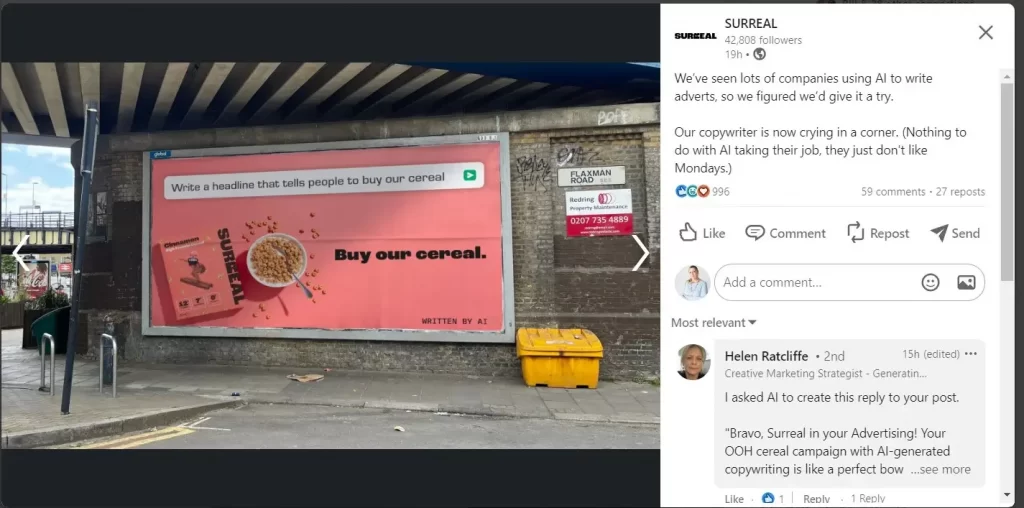In 2025, small businesses that ignore social media risk becoming invisible. With over 5.24 billion social media users globally (Statista, Feb 2025), platforms like TikTok, Instagram, and Facebook aren’t just for entertainment—they’re your gateway to brand visibility, trust, and sales.
Whether you’re a boutique selling handmade jewelry or a local coffee shop trying to stand out, social media levels the playing field. You don’t need a massive budget or celebrity endorsements. You need strategy, consistency, and authenticity.
This guide gives you everything: from choosing the best platforms based on your business type to real, tactical tips that actually work in today’s crowded feed. We’ll also explore common questions like “What’s the 5-5-5 rule?” and how to avoid rookie mistakes like posting without purpose or ignoring DMs.
Key Takeaways
- Social media is a cost-effective way to build brand awareness, trust, and long-term customer relationships.
- Choosing the right platform (based on your audience and product type) is more important than trying to be everywhere.
- Successful brands are using behind-the-scenes content, user-generated posts, and founder-led storytelling to grow loyal communities.
- Engagement matters more than vanity metrics: likes don’t always mean leads.
- The best strategies are data-informed: measure what works, double down, and always adapt.
Let’s dive into how your small business can turn scrolls into sales—and likes into loyal customers.
Benefits of Social Media for Small Businesses
Social media is no longer optional. It’s where your customers hang out, talk, shop, and decide who to trust. In 2025, small businesses are using it not just for marketing, but for social commerce: turning followers into buyers through seamless in-app shopping experiences. Here’s how social media helps your business grow.
Get more people to know about your brand
Social media is the fastest way to increase brand awareness, without a massive advertising budget. According to DataReportal 2025, about 30% of users discover new brands via social media ads, posts, or influencer mentions. With just one viral post or reel, your local brand can reach thousands or even millions.
You don’t need to go viral every day. By posting consistently, using hashtags strategically, and tapping into trends, you make sure your business shows up where your audience is already looking.
Bring steady traffic to your website and get more leads
Each post, story, or pin is a gateway to your store, website, or product page. On average, social media drives 16% of the total website traffic.
Platforms like Pinterest, Instagram, and Facebook allow you to directly link to your products or landing pages, making it easier to convert scrolling into shopping.
Make customer service faster and friendlier
Social media has changed the way customers expect support. A survey by Sprout Social found that over 69% of consumers expect brands to reply within 24 hours, or they’ll consider alternatives.
By answering messages, comments, and reviews quickly, you build trust and loyalty. Tools like Facebook Messenger automation or Instagram quick replies help small teams deliver fast, friendly service, even with limited resources.
Market your business without spending a lot
Paid ads help, but you don’t need them to grow. Platforms reward accounts that post consistently and get engagement. User-generated content (UGC), contests, product demos, and educational content all help you market organically.
Many small brands build entire followings by being real, helpful, and active, not by spending thousands. Even better, you can start small with boosted posts or retargeting ads as low as $5/day.
Stand out from the competition
Social media helps you tell your unique story. Are you eco-friendly? Family-run? Female-owned? Do you support local artisans? These differentiators matter, especially to Gen Z and Millennial shoppers.
A strong brand voice, consistent visuals, and personal stories help you stand out—even in crowded markets. In fact, brands with a clear mission and relatable tone see 3x more engagement (Hootsuite, 2025).
Check our guide on How to promote your business.
How to Pick the Right Platforms for Your Business
Not every platform is a good fit for your business and trying to be everywhere often leads to burnout and weak results. Instead, focus on 2–3 platforms where your audience spends the most time and where your content style fits naturally.
Here’s what each major platform offers small businesses in 2025:
Still one of the best platforms for community-building and local reach. Great for restaurants, service providers, and small retailers.
- Best for: Running local ads, building groups, and event promotions.
- Key stat: Facebook boasts the highest number of buyers worldwide. A significant portion of these buyers is aged 14 and above. An impressive 78% of Facebook users report discovering new products on the platform.
- Pro tip: Set up a Facebook Shop to let users browse and buy without leaving the app. Learn how to manage your Facebook Shop feed effectively with LitCommerce.
Perfect for visual storytelling, product promotion, and influencer marketing. Essential for fashion, beauty, food, and lifestyle brands.
- Best for: Reels, behind-the-scenes, and UGC (user-generated content).
- Key stat: 49% of Gen Z social media users have purchased at least one product using Instagram.
- Pro tip: Use Instagram Shopping and Reels to improve discoverability and conversions. Learn how to manage your Instagram product feed and boost visibility with LitCommerce.
X (formerly Twitter)
Best for real-time conversations, customer service, and thought leadership. Works well for tech, news, and B2B.
- Best for: Announcements, trending topics, and brand voice.
- Key stat: 77% of X (Twitter) users have a better impression of brands that respond to tweets, and six out of ten expect a reply within one hour.
- Pro tip: Use X Communities or long-form notes to go beyond 280 characters. And discover how to manage your Twitter (X) product feed efficiently with LitCommerce.
Ideal for B2B companies, consultants, agencies, and service providers.
- Best for: Building authority, generating leads, and networking.
- Key stat: 4 out of 5 LinkedIn users drive business decisions.
- Pro tip: Share case studies, team wins, and thought leadership posts to attract high-value leads.
YouTube
Powerful for long-form tutorials, product demos, and searchable content.
- Best for: Education, software, fitness, coaching, and tech brands.
- Key stat: YouTube is the #2 search engine globally, just behind Google.
- Pro tip: Turn one long video into multiple clips for TikTok, Reels, and Shorts.
Highly effective for DIY, crafts, home, fashion, and food niches.
- Best for: Driving traffic to blogs, product pages, and evergreen content.
- Key stat: Pinterest shoppers spend 80 percent more and have a 40 percent larger basket size than users on other social platforms.
- Pro tip: Optimize pins with keywords and link directly to your store or blog and learn how to sync and manage your Pinterest product feed with LitCommerce.
TikTok
Best for short-form content, trends, and rapid brand exposure. Especially useful for DTC brands targeting younger audiences.
- Best for: Creative storytelling, viral products, and authentic brand moments.
- Key stat: The average user spends 55 minutes and 48 seconds on TikTok each day.
- Pro tip: Combine trending sounds with product demos and behind-the-scenes clips for high reach. Plus, manage your TikTok product listings and streamline multichannel selling with LitCommerce.
How To Use Social Media For Small Business
Once you’ve picked your platforms, it’s time to turn them into engines for real business growth—not just likes and followers. Here’s a step-by-step plan that small businesses can follow to build a smart, sustainable social media presence in 2025:
Step 1: Set clear, SMART goals
Start with S.M.A.R.T. goals—Specific, Measurable, Achievable, Relevant, and Time-bound. Don’t just aim to “get more followers.”
Example SMART goals:
- Gain 500 Instagram followers in 3 months
- Drive 1,000 visits to your website from Facebook in 30 days
- Get 10 leads per month from LinkedIn posts
Setting specific targets helps you track performance and make better decisions.

Step 2: Research your audience
You can’t succeed if you don’t know who you’re talking to. Use platform insights, Google Analytics, and customer feedback to identify your audience’s age, interests, and behavior.
Example: If your main customers are women aged 25–34 who shop online, focus on visual platforms like Instagram and Pinterest with lifestyle-driven content.

Step 3: Audit your current social presence
Look at your existing accounts—what’s working, what’s not?
Check:
- Which posts got the most engagement?
- Are your bios, links, and visuals consistent?
- Are you posting regularly and replying to comments?
This quick audit helps you identify gaps and opportunities before building a new strategy.
Step 4: Choose key platforms
Don’t spread yourself too thin. Based on your audience and goals, focus on 2–3 platforms to start. It’s better to be consistent on fewer platforms than mediocre on many.
Use the platform guide in the previous section to make smart picks.
Step 5: Develop a content strategy
Your content needs to do three things: educate, entertain, and convert.
Break it down into content buckets like:
- Behind the scenes
- Product tips and demos
- Customer stories or testimonials
- Educational “how-to” posts
- Fun/relatable memes or trends
Pro tip: Use the 80/20 rule: 80% valuable content, 20% promotional. This builds trust and keeps followers engaged.
Step 6: Engage and grow
Don’t just post and ghost. Social media is a two-way street.
- Reply to comments and DMs
- Like and share user-generated content
- Follow relevant accounts in your niche
- Join groups, communities, or hashtags
The more you engage, the more visible your brand becomes—especially on platforms like Instagram and X.
Step 7: Measure and adjust
Use analytics tools like Meta Insights, TikTok Analytics, or LinkedIn Page Stats to track what works.
Key metrics to monitor:
- Engagement rate (likes + comments ÷ followers)
- Click-through rate (CTR)
- Follower growth
- Website conversions
Then, refine your strategy monthly based on the data. Keep testing new content formats and post times to improve performance over time.

Small Business Social Media Strategy: 10 Simple Tips
These actionable tips are used by successful small brands in 2025 to build trust, drive engagement, and stand out, even in saturated markets.
1. Be honest and real with your posts
Forget the filters and fluff. Today’s audiences crave transparency. Whether you’re sharing a small mistake, your packaging process, or a personal business challenge, realness wins trust. Posts that show your journey, the wins and the struggles, create emotional connection with your followers.
Tip: Post an unedited photo of your workspace with a caption like “This is what running a small biz really looks like on Mondays!”
2. Show what happens behind the scenes
Behind-the-scenes content makes your brand feel alive. Show how you create your product, prep for shipping, or brainstorm new ideas. These moments make customers feel like insiders—which boosts loyalty and word of mouth.
Ideas:
- A time-lapse video of assembling a product
- A quick clip of your morning coffee while replying to customer messages
- A story about how you chose your packaging design

3. Add a bit of humor (when it fits your brand)
Humor is one of the fastest ways to go viral or earn shares. But it needs to match your tone. If you’re a formal financial consultant, light wit works better than memes. For lifestyle, pet, or beauty brands, trending audios and relatable jokes can explode your reach.
Tip: Recreate a popular meme using your product (e.g. “This is me before coffee… this is me after trying our new espresso blend ☕”).

4. Use photos and stories from your customers
People trust people more than brands. When you share UGC, photos or testimonials from real customers, it acts as social proof and drives conversions. Encourage buyers to tag your brand, then repost with permission.
Pro tip: Create a branded hashtag like #MadeWithMilo to collect customer photos. Feature them weekly in your stories or grid.

5. Highlight your team and their stories
Your business isn’t just a logo, it’s a group of passionate people. Humanize your brand by showing the faces behind your success. Celebrate birthdays, new hires, or simply share your team’s favorite lunch spots.
Example: “Meet Sarah: she’s the magic behind our handwritten thank-you notes. She’s also a huge cat person 🐱.”

6. Share useful info, not just ads
Educational or value-packed content keeps people following your page even if they’re not ready to buy. It positions you as a helpful expert and builds long-term trust. Aim to post how-tos, tips, checklists, or behind-the-product knowledge.
Ideas:
- “3 ways to style our crossbody bag this fall”
- “Why silicone baby bibs are safer than plastic ones”
- “Quick tips to care for handmade ceramics”
7. Post regularly so people know you’re active
Posting once a month won’t help you grow. Platforms reward consistency, and audiences expect regular updates. You don’t need to post daily, 3 to 5 times a week is a great target for most small businesses.
Tool tip: Use free schedulers like Buffer, Later, or Meta Business Suite to queue posts in advance and stay on track.
8. Don’t ignore questions and messages
If a customer comments, DMs, or asks a question, they expect a reply. Fast responses = trust + better customer experience. Replying also boosts your visibility in the algorithm and keeps people coming back.
Example: A reply like “Thanks for asking! Yes, we ship to Canada” can be the difference between a lost sale and a loyal buyer.
9. Let your founders or team speak up online
When the founder speaks, people listen. Whether it’s a personal note, a live Q&A, or just a story post, founder-led content builds credibility and relatability. It helps customers feel like they know the person behind the product.
Ideas:
- A short video on how the business started
- Weekly “Friday Founder Thoughts” post
- Candid IG Story sharing what inspired a new product drop
10. Try different post types like reels, polls, or stories
Mixing up your formats keeps your content fresh and reaches more people through different algorithm priorities. Don’t just post static photos. Add reels for discovery, stories for quick updates, and polls for engagement.
Pro tip: Repurpose content. Turn a blog post into a carousel, a tutorial into a reel, and a customer question into a poll.

Social Media for Small Business – FAQs
Still have questions about how to get the most out of social media? Here are answers to some of the most common questions small business owners ask in 2025:
1. How to use social media for a small business?
Use social media as a relationship-building tool first, and a sales tool second. Start by picking the right platforms, set clear goals (like brand awareness or lead generation), and post content that your audience finds valuable or entertaining. You should:
– Be consistent with your branding and posting schedule
– Engage actively with your followers (don’t ignore DMs or comments)
– Mix in promotional posts with educational, entertaining, or inspiring content
– Use platform features like Reels, Stories, or Polls to increase reach
– Track your metrics weekly or monthly and adjust accordingly
– Don’t try to do everything at once—start small, and scale as you grow.
2. What is the 5-5-5 rule on social media?
The 5-5-5 rule is a popular engagement framework for growing on social media:
– Engage with 5 new people in your niche (follow, like, or comment)
– Comment on 5 posts that are trending or related to your audience
– Send 5 direct messages (DMs) or replies to connect with followers or customers
Doing this daily helps small businesses build meaningful relationships, increase reach, and drive more interactions—without needing to post new content every day.
3. Which social media platforms are essential for small business marketing these days?
It depends on your niche and audience, but in 2025, these are considered essential starting points:
– Instagram. For visual brands, ecommerce, fashion, beauty, food, and lifestyle
– Facebook. For local businesses, service-based businesses, and community building
– TikTok. For trend-driven brands, DTC products, and Gen Z targeting
– YouTube. For education, tutorials, and long-form video content
– LinkedIn. For B2B services, consultants, and professional networking
You don’t need to be on all platforms. Choose 2–3 that match your strengths and where your target audience is most active.
4. What social media platform is best for small businesses?
There’s no universal “best” platform. It depends on your business type, content style, and customer demographic. That said:
– Instagram and TikTok are best for product-based businesses wanting quick brand visibility
– Facebook is strong for local service-based businesses and building loyal communities
– LinkedIn is ideal for consultants, coaches, and B2B professionals
– Pinterest works well for evergreen content and driving traffic to blogs or shops
– YouTube is unmatched for tutorials, product reviews, and SEO-rich long-form content
Social Media Marketing For Small Businesses: Final Thoughts
In 2025, social media isn’t just an option for small businesses, it’s your most powerful tool for building a brand, growing a community, and driving sales. Whether you’re just starting out or refining your current strategy, the key is to focus on authenticity, value, and consistency.
Here’s a quick recap of what will help you succeed:
- Pick platforms that fit your business type and audience behavior, not just what’s trending.
- Set clear, trackable goals, and use data to improve over time.
- Create content that educates, entertains, or inspires, not just sells.
- Engage like a human: reply to messages, join conversations, and show the faces behind the brand.
- Try new formats like Reels, TikToks, polls, and behind-the-scenes clips to stay visible and relevant.
Most importantly, remember this: people don’t buy from businesses. They buy from brands they trust. And trust is built through conversations, not just conversions.
Even with a small budget, your creativity, voice, and story can cut through the noise and make a lasting impression. With the right approach, social media can become the bridge between where your business is now and where you dream it could go.




